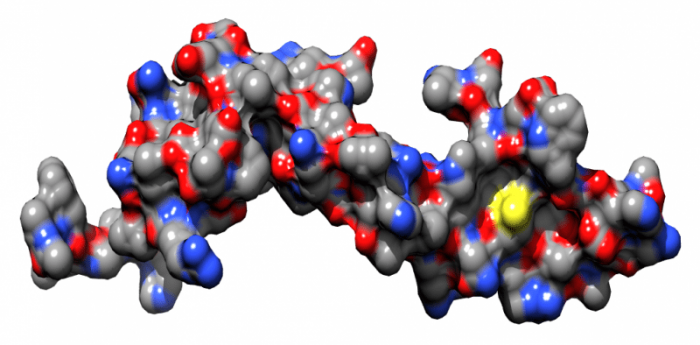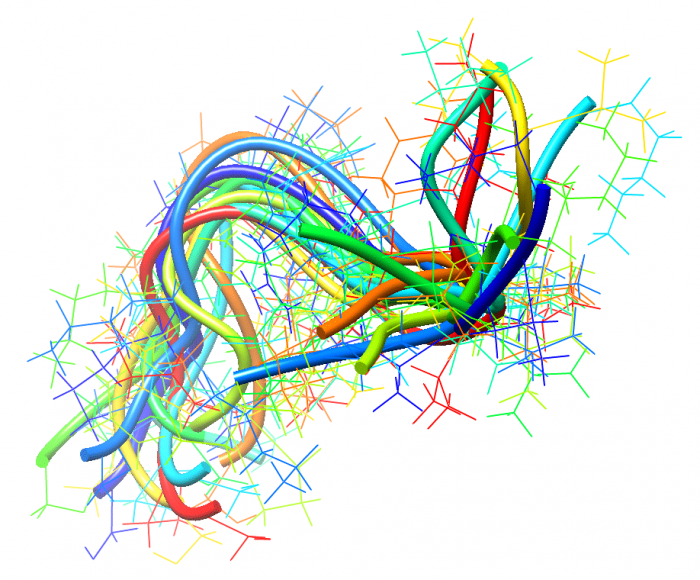
Alzheimer’s disease is the most common neurodegenerative disorder with an estimated 44 million affected people worldwide. The typical symptoms range from memory loss, confusion, short attention span to a wide variety of changes in mood and behavior, with devastating and life-changing effects for both patients and their families.
While it is widely recognized that Alzheimer’s susceptibility is higher among elderly persons and individuals with a family history of the disease, a less well known risk-associated factor is gender. At an age of 65, on average 1 in 6 females will develop the disease during the remainder of their life, whereas only 1 in 11 males are expected to become affected. This difference remains significant even when adjusting the comparison between the genders for a longer average life expectancy of women. Moreover, differences between the sexes also influence the clinical features of Alzheimer’s disease: A significantly more severe pathology and faster brain atrophy rate has been observed in women than in men.
The molecular causes of these gender disparities and the mechanisms by which they modulate the disease are still unknown, but their understanding may pave the way to the discovery of new drug targets and more effective gender-tailored treatments.
In a recent study, scientists from the Luxembourg Centre for Systems Biomedicine used molecular profiling experiments to study the brain samples of more than 650 deceased Alzheimer patients and control subjects of both sexes. They showed that some of the disease-associated activity alterations at the level of individual biomolecules are indeed gender-specific. In particular, they identified a sex-linked regulatory gene, called ubiquitin-specific peptidase 9 (or USP9), that displays both significant activity changes in Alzheimer’s and a diverse activity profile between the genders.

Molecular surface representation of a sub-structure in the ubiquitin-specific peptidase 9 (USP9 putative UBL domain, crystal structure derived from PDB database entry 5VDB). (Credit: Enrico Glaab)
When studying the USP9 gene in more detail using cell culture and zebrafish experiments to determine the effects of knocking the gene down, the researchers could show that the expression of a known Alzheimer’s disease-associated gene was reduced in both models. This gene encodes the microtubule-associated protein tau (MAPT) and forms so-called “tangle structures“ in Alzheimer’s as a major pathological hallmark of the disease.

NMR solution structure of human tau phosphothreonine peptide (ribbon and wireframe representation, NMR structure derived from PDB database entry 1I8H). (Credit: Enrico Glaab)
To better understand the molecular signaling network that interconnects USP9 and MAPT, the scientists then created a computer model that interlinks the obtained molecular profiling data from relevant genes with known regulatory information from the literature and public databases. They identified an experimentally confirmed signaling chain that explains how USP9 activity can modulate MAPT expression and is consistent with the measured profiling data.
Interestingly, the analysis shows that USP9 can influence MAPT activity via multiple tau regulators, including proteins that have previously been suggested as candidate drug targets for Alzheimer’s. Thus, altering USP9 activity pharmacologically to exploit its combined effects on multiple direct MAPT regulators has the potential to exert a stronger effect on MAPT-related pathological alterations as a new intervention strategy against Alzheimer’s disease.
The detailed study findings are discussed in the article Gender-Specific Expression of Ubiquitin-Specific Peptidase 9 Modulates Tau Expression and Phosphorylation: Possible Implications for Tauopathies in the journal Molecular Neurobiology. The work was led by Enrico Glaab from the Luxembourg Centre for Systems Biomedicine at the University of Luxembourg.









